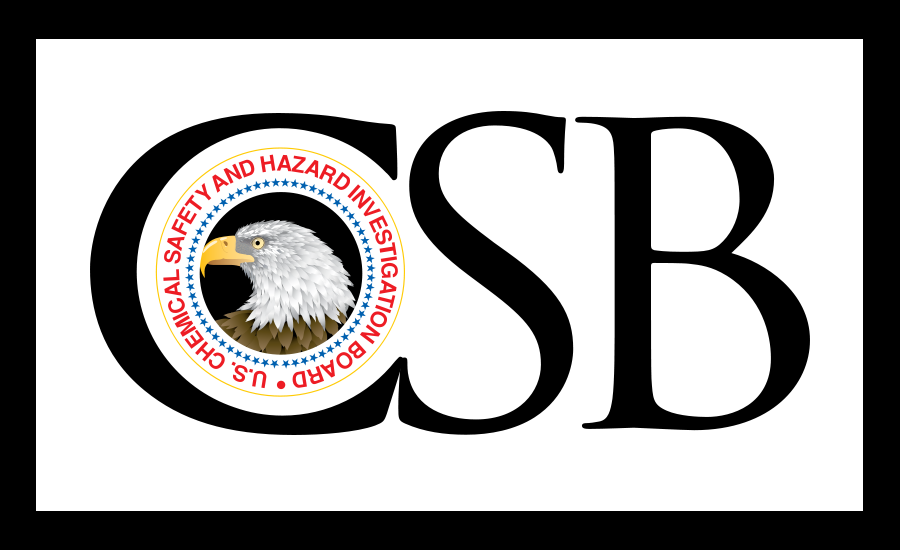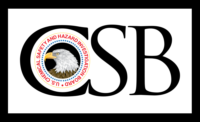Process safety management (PSM) failures were behind the 2015 explosion at the ExxonMobil refinery in Torrance, California – an event that raised gas prices in California and cost drivers in the state an estimated $2.4 billion.
That’s the conclusion of the final report released yesterday by the U.S. Chemical Safety Board (CSB), which was accompanied by animation of the explosion. (Click here to view the video.)
The blast caused serious property damage to the refinery and scattered catalyst dust up to a mile away from the facility into the nearby community.
How it happened
The explosion occurred in the refinery’s fluid catalytic cracking (FCC) unit, where a variety of products, mainly gasoline, are produced. A reaction between hydrocarbons and catalyst takes place in what is known as the “hydrocarbon side” of the FCC unit. The remainder of the FCC unit is comprised of a portion of the reaction process and a series of pollution control equipment that uses air and is known as the “air side” of the unit.
The CSB’s report emphasizes that it is critical that hydrocarbons do not flow into the air side of the FCC unit, as this can create an explosive atmosphere. The CSB determined that on the day of the incident a slide valve that acted as a barrier failed. That failure ultimately allowed hydrocarbons to flow into the air side of the FCC, where they ignited in a piece of equipment called the electrostatic precipitator, or ESP, causing an explosion of the ESP."
"Should not have happened"
CSB Chairperson Vanessa Allen Sutherland said, “This explosion and near miss should not have happened, and likely would not have happened, had a more robust process safety management system been in place. The CSB’s report concludes that the unit was operating without proper procedures.”
In its final report, the CSB describes multiple gaps in the refinery’s process safety management system, allowing for the operation of the FCC unit without pre-established safe operating limits and criteria for a shut down. The refinery relied on safeguards that could not be verified, and re-used a previous procedure deviation without a sufficient hazard analysis of the current process conditions.
Finally, the slide valve - a safety-critical safeguard within the system - was degraded significantly. The CSB notes that it is vital to ensure that safety critical equipment can successful carry out its intended function. As a result, when the valve was needed during an emergency, it did not work as intended, and hydrocarbons were able to reach an ignition source.
Refinery violated company's own safety standards
The CSB also found that in multiple instances leading up to the incident, the refinery directly violated ExxonMobil’s corporate safety standards. For instance, the CSB found that during work leading up to the incident, workers violated corporate lock out tag out requirements.
In July 2016, the Torrance refinery was sold by ExxonMobil to PBF Holdings Company, LLC, which now operates as the Torrance Refining Company. Since the February 2015 explosion, the refinery has experienced multiple incidents.
Chairperson Sutherland said, “There are valuable lessons to be learned and applied at this refinery, and to all refineries in the U.S. Keeping our refineries operating safely is critical to the well-being of the employees and surrounding communities, as well as to the economy.”
Could have been worse
The CSB investigation also discovered that a large piece of debris from the explosion narrowly missed hitting a tank containing tens of thousands of pounds of modified hydrofluoric acid, or MHF. Had the tank ruptured, it would have caused a release of MHF, which is highly toxic. Unfortunately, ExxonMobil, the owner-operator of the refinery at the time of the accident, did not respond to the CSB’s requests for information detailing safeguards to prevent or mitigate a release of MHF, and therefore the agency was unable to fully explore this topic in its final report.
Chairperson Sutherland said, “Adoption of and adherence to a robust safety management process would have prevented these other incidents. In working with inherently dangerous products, it is critical to conduct a robust risk management analyses with the intent of continually safety improvement.”
The CSB is an independent, non-regulatory federal agency charged with investigating serious chemical incidents. The agency's board members are appointed by the president and confirmed by the Senate. CSB investigations look into all aspects of chemical accidents, including physical causes such as equipment failure as well as inadequacies in regulations, industry standards, and safety management systems.
The Board does not issue citations or fines but does make safety recommendations to plants, industry organizations, labor groups, and regulatory agencies such as OSHA and EPA. Visit our website, www.csb.gov.





